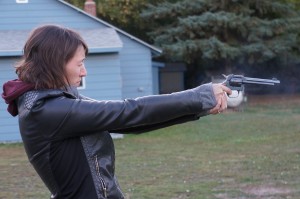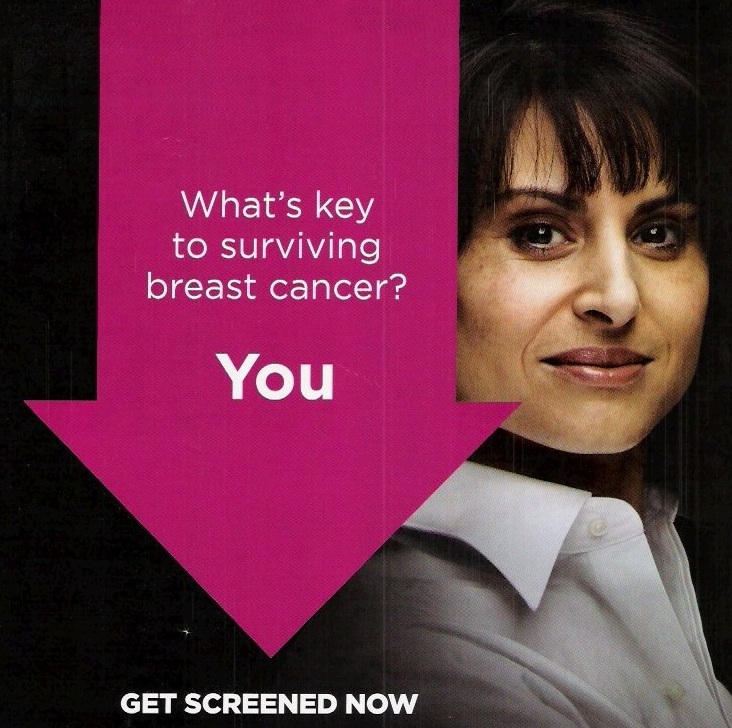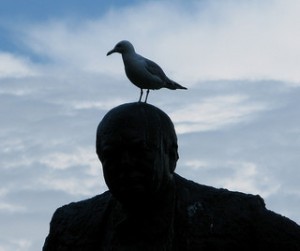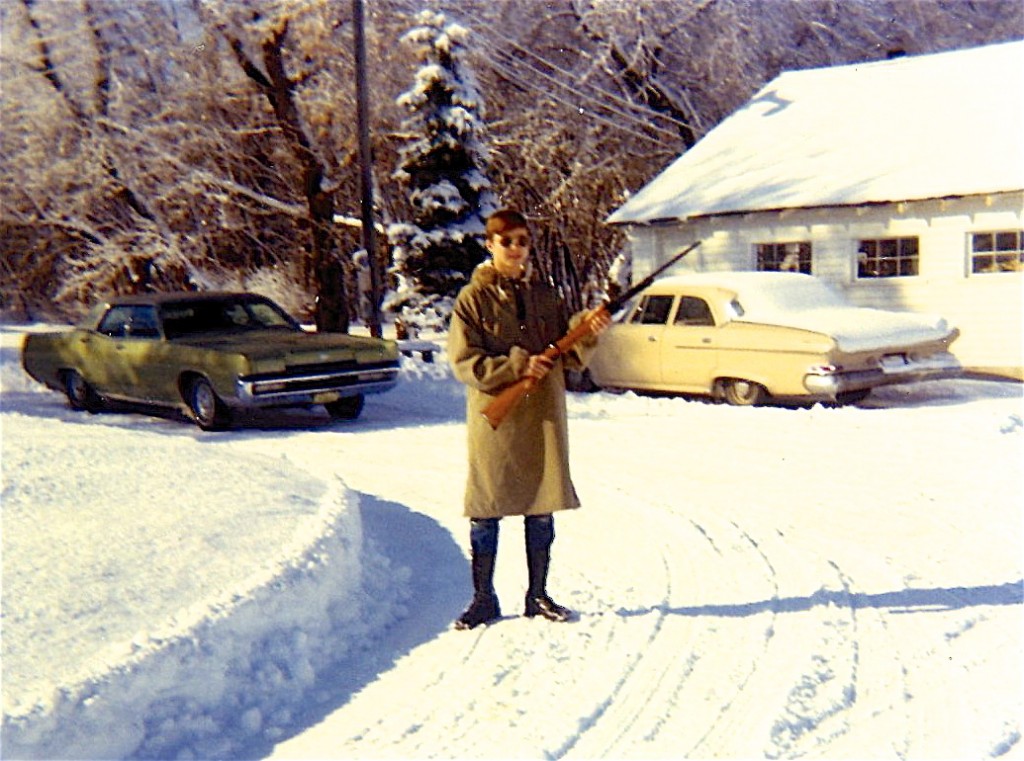 I’m generally anxious though I doubt that I have Generalized Anxiety Disorder, or at least when I went to trustable-looking websites and read their lists of symptoms and took their little tests, I didn’t quite fit or pass. But sometimes I get scared and jumpy and fretful and hyper-alert and shaky; I stop thinking clearly; I’m preoccupied by whatever it is that will happen or might happen or could conceivably happen. I really, really don’t like the feeling that I care, I’m invested, I’m involved, and that things go wrong and I’m not remotely in control. Actually I think I just have a heightened case of the human condition. Continue reading
I’m generally anxious though I doubt that I have Generalized Anxiety Disorder, or at least when I went to trustable-looking websites and read their lists of symptoms and took their little tests, I didn’t quite fit or pass. But sometimes I get scared and jumpy and fretful and hyper-alert and shaky; I stop thinking clearly; I’m preoccupied by whatever it is that will happen or might happen or could conceivably happen. I really, really don’t like the feeling that I care, I’m invested, I’m involved, and that things go wrong and I’m not remotely in control. Actually I think I just have a heightened case of the human condition. Continue reading
Back in February, a scandal broke out at Susan G. Komen for the Cure®, the breast cancer advocacy group with the trademarked pink ribbon. That scandal centered around the group’s decision to stop funding Planned Parenthood’s cancer screening efforts. But the flap over Planned Parenthood obscured an even more scandalous problem at Komen — the group’s outright denialism of tumor biology.
I wrote about the problem here on February 8. On August 2, Dartmouth researchers Steven Woloshin and Lisa M Schwartz published an editorial echoing the points in my post. Komen’s response? Silence.
Schwartz tells me, “We never heard from Komen.” If leaders at the group read the Dartmouth paper, they didn’t seem to draw many lessons. According to Schwartz, the group’s new website, I Am the Cure, contains no survival statistics.
“They now seem to be highlighting breast cancer in young people (1 of their 5 quiz questions is about how women in 20’s can get breast cancer),” Schwartz says, “And one of their big ads is about a college senior with metastatic cancer.” There’s nothing wrong with giving a voice to young women facing breast cancer, but it’s deceptive to imply that these stories are typical. The median age at diagnosis is 61.
The deceptive ad that I criticized in February continues to be featured on the Komen website. With National Breast Cancer Awareness Month once again upon us, it seems like a good time to revisit the issue. What follows is my original post from February.
-Christie
Is breast cancer threatening your life? This Susan G. Komen for the Cure® ad leaves no doubt about who’s to blame —you are. Over the last week or so, critics have found many reasons to fault Susan G. Komen for the Cure®. The scrutiny began with the revelation that the group was halting its grants to Planned Parenthood. The decision seemed like a punitive act that would harm low-income women (the money had funded health services like clinical breast exams), and Komen’s public entry into the culture wars came as a shock to supporters who’d viewed the group as nonpartisan.*
 Scientists aren’t very good at telling stories.
Scientists aren’t very good at telling stories.
That’s a generalization, but true. I’m constantly cajoling scientists to tell me the story — hell, any story, any anecdote, any remotely narrative nugget — of their work. More scientists than you’d expect are good at simplifying a complicated technology or theory into layman’s terms. And many are good, sometimes too good, at distilling years of research into a few “bottom line” bullet points. But the scientist who tells a real story — where people do things in some kind of compelling sequence and ultimately arrive at something new — is rare.
So rare that last week I paid $10.70 to hear a few at an event called The Story Collider. Every month, half a dozen people take the stage in the basement of a popular Brooklyn bar. Each gets 10 to 15 minutes to entertain a packed audience of 120 beer-drinking hipsters with a tale of science. Story Collider’s mission is to demonstrate that science affects all of us, every day, and most of the performers aren’t scientists. But some are, and their stories don’t disappoint.
Last week, for example, evolutionary biologist Diane Kelly told us about her research on armadillo penises. In the early ’90s, as a graduate student at Duke University, in North Carolina, she wanted to study how penises work. (Erectile tissue has pretty unusual mechanical properties, after all.) But Kelly, a lifelong animal lover, hated the idea of killing animals for her project. She nearly fainted once when attempting to demonstrate how to euthanize a frog. So her clever, if extreme solution was to temporarily move to a place (Florida) that had a bounty of big-penis roadkill (armadillos).
Kelly’s tale was full of surprising twists and turns, culminating with a policeman and a bloody crotch. But its essence was about how she came to terms with the cold fact that her work would require some animals to die. Take a listen:
Continue reading
In which Cameron informs us that gull poop carries drug resistant bacteria that infests beaches, lakes and even dumps. Delightful stories abound of the falcons and dogs that have been dispatched to chase them off. But that makes me wonder: after they’re chased off, where do they take their pestilent cargo?
Do stricter gun laws make safer societies? Findings have been inconclusive, says Cassie.
Christie wonders if we are going to lose our tangible memories to the cloud.
Tom says life extension is BS, not because we don’t have the technology (we don’t) but because it will engender an eternity of middle age.
If you’re getting down about losing your youth, your mementos or your life, take comfort in the exquisite rock balance sculptures Michelle has hunted down: they are, as one commenter put it, a monument to impermanence.
See you next week!
Last week, I left New York and headed for my home state of North Dakota. The plan was to fly to Minneapolis and then ride the rest of the way with my dad and stepmom, who were driving in from Wisconsin. Just before I headed to the airport, I sent my dad a text.
I’m not a hunter or a gun fanatic, but I thought it might be fun to shoot something. I envisioned us blasting beer cans off fence posts — father-daughter bonding. Instead we aimed at a cardboard box. I killed it dead. Turns out I’m kind of a crack shot despite my awkward stance. Apparently the skeet shooting I did in college as part of hunter’s safety paid off.
While I find guns thrilling, I also recognize that they’re designed to be deadly weapons.  Just last month, an army veteran shot and killed six people in a Sikh temple just outside Milwaukee. Two weeks before that a gunman murdered 12 people in a movie theater in Colorado. Gun violence isn’t as rampant as it once was, but it’s still a serious problem. In 2009, 31,347 people died of gun-related deaths. That’s slightly fewer than the number of people killed in car accidents. So what’s the solution? Would curbing access to guns prevent gun deaths? It’s a loaded question. (Pun intended.) Continue reading
Just last month, an army veteran shot and killed six people in a Sikh temple just outside Milwaukee. Two weeks before that a gunman murdered 12 people in a movie theater in Colorado. Gun violence isn’t as rampant as it once was, but it’s still a serious problem. In 2009, 31,347 people died of gun-related deaths. That’s slightly fewer than the number of people killed in car accidents. So what’s the solution? Would curbing access to guns prevent gun deaths? It’s a loaded question. (Pun intended.) Continue reading
 I have been trying to discourage my older son from chasing birds. For a while it worked—he couldn’t say much and was easily distracted by food (a family flaw). But now he’s a better conversationalist than I am, and of course the first thing he asks is, “Why?”
I have been trying to discourage my older son from chasing birds. For a while it worked—he couldn’t say much and was easily distracted by food (a family flaw). But now he’s a better conversationalist than I am, and of course the first thing he asks is, “Why?”
I tried to explain something about how it can stress the birds—when you see a group of already-skittery sanderlings speed up their tiny feet, it makes your own heart pound—and then that can make them not do very well. This does not sound very convincing in my sleep-deprived vocabulary. Continue reading
 My mother sent me an old letter recently. It was a handwritten note scrawled across two pages that she’d written to her sister more than 30 years ago. My family had just moved to West Germany, where my dad was stationed in the Air Force, and in the letter Mom describes for her sister the tiny Eiffel village where we’d taken up residence. The letter’s contents are interesting in their own right, but its three-dimensional nature is what struck me first.
My mother sent me an old letter recently. It was a handwritten note scrawled across two pages that she’d written to her sister more than 30 years ago. My family had just moved to West Germany, where my dad was stationed in the Air Force, and in the letter Mom describes for her sister the tiny Eiffel village where we’d taken up residence. The letter’s contents are interesting in their own right, but its three-dimensional nature is what struck me first.
The letter was a physical object — a piece of paper that she’d scribbled upon and then neatly folded into an envelope and sent across the ocean to her sister in Kansas. It was a relic from a bygone age. In the age of email and text messaging, most correspondence no longer lives on scraps of linen that you can feel in your hands, but in the “cloud,” that nebulous modern ether. In fact, the letter Mom sent me was not the object itself, but a scan of it. I read it first on my phone, though I felt compelled to print it on paper for the second reading. Continue reading
 Something surprising happened last week: I heard a new song, and I liked it. Liked it enough to want to find out who sang it, and how I could hear more. Once, that would have been utterly unremarkable. For a good part of my twenties and thirties, I was a music junkie. I went out to see live bands—rock, mostly, in all its forms and allied genres—at least twice a week, and often more. Wherever I lived, I sought out the smaller clubs, and the music no one else had heard yet. I had my perennial favorites, of course. But as my record collection swelled to nearly a year of round-the-clock listening time, the thrill of hearing something new remained a major part of the experience.
Something surprising happened last week: I heard a new song, and I liked it. Liked it enough to want to find out who sang it, and how I could hear more. Once, that would have been utterly unremarkable. For a good part of my twenties and thirties, I was a music junkie. I went out to see live bands—rock, mostly, in all its forms and allied genres—at least twice a week, and often more. Wherever I lived, I sought out the smaller clubs, and the music no one else had heard yet. I had my perennial favorites, of course. But as my record collection swelled to nearly a year of round-the-clock listening time, the thrill of hearing something new remained a major part of the experience.
Now, as I inch towards 50, I’m lucky if I find one new band I like in a year. But I don’t think it’s just my age, or that I’m stuck musically in some former time—I’ve largely stopped listening to music altogether, unless it’s background accompaniment to drown out less desirable noise. I’m starting to think I’ve simply saturated my music receptors, and, unable to experience the thrill of the new any longer, have moved on. Without meaning to, or really noticing as it happened, I’ve let one of the major passions and cultural experiences of my life simply slip away.
No one aspires to middle age, the broad-bottomed flyover country of life stages. Continue reading



